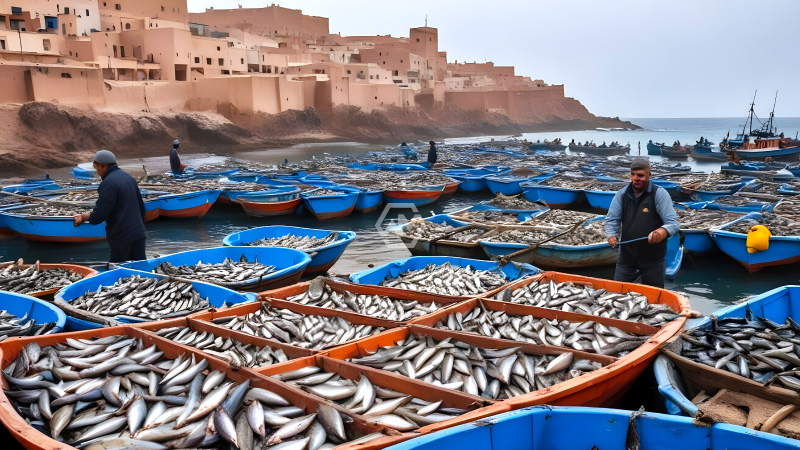- Moroccan coastal and artisanal fishing saw a 4% decline in product values in the first half of 2024, totaling 4.8 billion dirhams.
- Landings decreased by 10%, with significant drops observed in shellfish, seaweed, and crustaceans.
- Despite challenges, certain species like white fish and cephalopods showed slight increases in landings.
Morocco’s National Fisheries Office (ONP) has reported a concerning downturn in the coastal and artisanal fishing sectors for the first six months of 2024. The total value of marketed products fell by 4% to 4.8 billion dirhams, reflecting broader economic challenges and environmental pressures affecting local fishers.
The decline has disproportionately impacted Mediterranean ports, which saw a 20% reduction in landings, contrasting with a more moderate 10% decrease in Atlantic ports.
Assessing the Impact: Declines in Moroccan Coastal Fishing, Mid-2024 Update
Morocco’s coastal and artisanal fishing industries faced significant challenges in the first half of 2024, marked by a 4% decline in product values to 4.8 billion dirhams. This downturn was accompanied by a notable 10% decrease in landings, impacting key species such as shellfish and seaweed. Despite these declines, there were pockets of resilience, as evidenced by slight increases in the landings of white fish and cephalopods.
Geographically, Mediterranean ports bore the brunt of the downturn, experiencing a 20% reduction in landings compared to a more moderate 10% decrease in Atlantic ports. This regional disparity reflects varying environmental and economic factors influencing fishing yields across Morocco’s coastline. Moving forward, stakeholders are urged to prioritize sustainable practices to mitigate further declines and support the long-term health of marine ecosystems and fishing communities.
The challenges faced by Morocco’s coastal and artisanal fishing sectors in 2024 underscore the need for adaptive management strategies and sustainable initiatives. As global pressures on marine resources continue to mount, fostering resilience within these industries is crucial to preserving both biodiversity and livelihoods along Morocco’s diverse coastlines.



